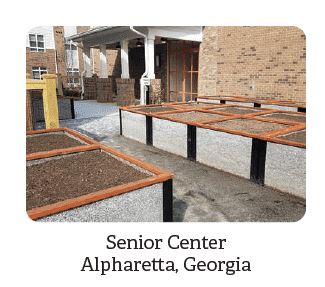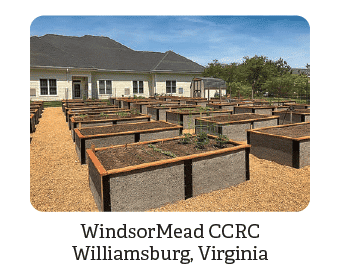Adaptive Gardening In Raised Beds Makes Growing Accessible To All
The benefits of organic gardening are numerous. People who grow their own fruits, vegetables and flowers at home have better access to healthy food, get exercise and fresh air, and often find it lowers their stress level. But gardening can be a difficult task for people with injuries or mobility limitations. Working in a yard or raised garden bed requires moving around, bending over and doing repetitive tasks. This can be a challenge for older folks, people who are disabled or individuals with injuries.
The relatively new field of adaptive gardening is developing techniques so that everyone – regardless of physical ability – can experience the joy of gardening. What is adaptive gardening, and how can you it help you or a loved one grow your own food and flowers?
What is Adaptive Gardening?
Adaptive gardening refers to the practice of “adapting” gardening tasks so they can be performed by anyone, even people with limited mobility. The concept has gained more attention as older gardens have found it harder to keep up with their gardens.
Adaptive gardening combines thoughtfully-designed gardens or raised garden beds with tools that make it easier for people with a limited range of motion to perform necessary tasks. Setting up an adaptive garden for yourself or someone you love doesn’t have to be expensive or complicated. It simply takes some ideas, empathy and creativity.


Who Can benefit from Adaptive Gardening?
Adaptive gardening was designed for people with a range of mobility issues. It’s perfect for people who need wheelchairs or walkers, or people with bad backs, injured knees or arthritis in their hands. That makes adaptive gardening perfect for people with disabilities (including veterans), the elderly and people with chronic injuries.
Designing an Adaptive Garden with Raised Garden Bed Kits
When you set out to create an adaptive gardening space, start by thinking about the needs of the person who will be using it. What is their limitation? Do they need a wider space between raised garden beds to accommodate a wheelchair or walker? Do they have a hard time bending over or kneeling? Has arthritis or another condition made it difficult for them to squeeze pruning shears or wield a shovel?
In a similar vein, it can also be helpful to think through what a person needs to do in a garden. They need to reach into each bed to remove ripe produce or blooming flowers. Unless there’s a watering system, they must carry a hose or watering can to the garden. If the person is already a gardener, talk to them about what tasks they’re struggling to perform.
With a good understanding of those things, start designing the garden to fit the person’s needs. Some research on the type of gardening containers that exist and the tools available for performing basic gardening tasks can be helpful.
Raised Garden beds and Other Containers for Adaptive Gardening
Raised garden beds can be a lifesaver for adaptive gardeners. Several companies make raised beds that are tall or stand on stilts, which eliminates the need to bend over or kneel. If you can’t find a raised bed that’s the perfect height, build one yourself or have a company custom-design one for you.
There are plenty of places to grow edibles and ornaments besides raised beds and the ground.
1. Place pots or other containers on a porch.
2. Set up a vertical garden on a wall (many of these can be made from recycled materials).
3. Hang baskets from hooks in a porch ceiling and use a pulley system to move them to the right height for the gardener. (The added benefit of this is that if you have a small space for gardening, the pulley system gets the plants are out of the way when someone isn’t caring for them.)
Tools for Adaptive Gardening
There are now a wide range of tools designed for adaptive gardeners on the market.
1. Long-handled shovels, rakes and pruners make it easy for anyone to reach into the middle of a garden bed without leaning over. If possible, pick up telescoping tools that can be lengthened and shortened for different tasks.
2. Ergonomically-designed pruners, clippers and other tools can prevent injury and make it easier for people with limited mobility to perform essential tasks.
3. Drip watering systems are great for plants and mean the adaptive gardener doesn’t have to carry around hoses or watering cans.
Looking for more ideas for adaptive gardening? Your local agricultural extension service may be your best resource.
What are your adaptive gardening tricks and techniques? We would enjoy hearing from you.
Paul Wood has more than 30 years experience in the construction industry. He spent over a decade with Habitat for Humanity International, building homes across Latin America, the Caribbean, and the United States. For the past 10 years, Paul has been the co-owner of ShelterWorks, maker of Faswall blocks and Durable GreenBed. Connect with Paul on Facebook and Twitter.

